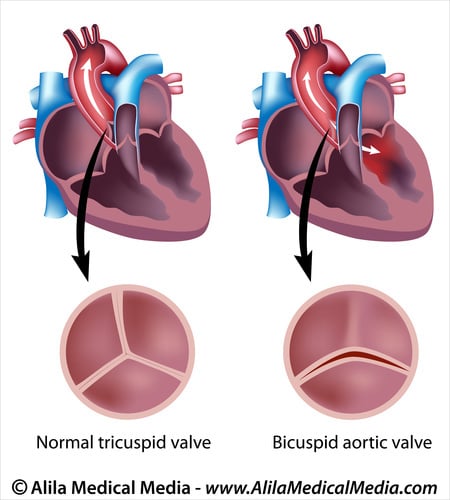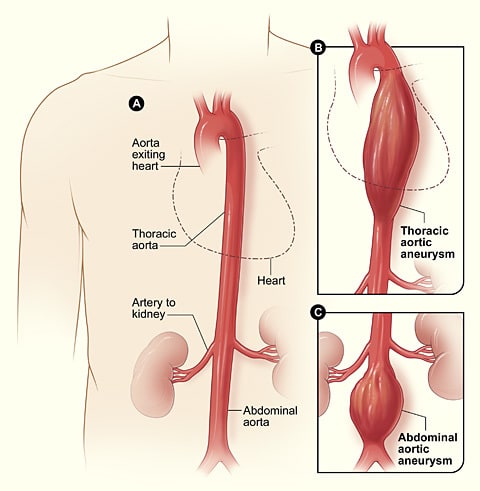Cause of Bill Paxton’s Death Revealed
Many were shocked last week when they heard of the death of actor Bill Paxton, 61, last week. At the time, all the information that was known was that the “Big Love” actor had died from complications from heart surgery. Today, TMZ was able to obtain a copy of Paxton’s death certificate which revealed his cause of death. Paxton died of a stroke a little over a week after undergoing surgery to repair an aortic aneurysm. Also present at the time of death was a bicuspid aortic valve.
In an interview in early February with Dylan Brody, Paxton told Brody that he suffered from rheumatic fever at the age of 13. What started as a sore, swollen wrist, was later diagnosed as rheumatic fever. According to Medline Plus, rheumatic fever is a disease that may develop after an infection with group A streptococcus bacteria (such as strep throat or scarlet fever). It can cause severe illness in the heart, joints, skin, and brain. It mainly affects children ages 5 to 15 who have had strep throat or scarlet fever. If it occurs, it develops about 14 to 28 days after these illnesses. Symptoms include fever, joint pain and swelling, and rash. It can cause permanent damage to the heart and heart valves.
Paxton was required to spend the next six months with very limited physical activity. He told Brody that this period of being an observer rather than a participant “fostered his imagination and powers of observation.”
“It kind of isolated me at an interesting age. Suddenly I was in this voyeuristic kind world, where I had TV but there wasn’t much TV on in those days, and I read a lot and looked out the window at the golf course.”
Paxton said this is what interested him in acting. He also said that the rheumatic fever may have lead to his current heart problems.
What is a Bicuspid Aortic Valve?
 The aortic valve is a one-way valve between the heart and the aorta, the main artery from the heart that distributes oxygen-rich blood to the body. Normally, the aortic valve has three small flaps or leaflets that open widely and close securely to regulate blood flow, allowing blood to flow from the heart to the aorta and preventing blood from flowing backwards into the heart.
The aortic valve is a one-way valve between the heart and the aorta, the main artery from the heart that distributes oxygen-rich blood to the body. Normally, the aortic valve has three small flaps or leaflets that open widely and close securely to regulate blood flow, allowing blood to flow from the heart to the aorta and preventing blood from flowing backwards into the heart.
Bicuspid aortic valve (BAV) is an inherited form of heart disease in which two of the leaflets of the aortic valve fuse during development in the womb resulting in a two-leaflet valve (bicuspid valve) instead of the normal three-leaflet valve (tricuspid). BAV is the most common cause of heart disease present at birth. About 2% of the population has BAV, and it is twice as common in males as in females.
Because of the valve abnormality, it doesn’t function perfectly. It may function well enough for years without causing symptoms or problems.
According to the Cleveland Clinic, the latest studies suggest that bicuspid aortic valve disease is caused by a connective tissue disorder. This disorder also causes other circulatory system problems. People with bicuspid aortic valve disease also may have abnormal coronary arteries, aortic aneurysm or an abnormal thoracic aorta (the portion of the aorta that passes through the upper chest) and unstable (labile) high blood pressure.
What are the symptoms of BAV?
A BAV may not be completely effective at stopping blood from leaking back into the heart. This leakage is called aortic regurgitation. The aortic valve may also become stiff and not open up. This is called aortic stenosis, which causes the heart to pump harder than usual to get blood through the valve. The aorta may become enlarged with this condition.
As previously stated, most of the time, BAV is not diagnosed in infants or children because it causes no symptoms. However, the abnormal valve can leak or become narrow over time.
Symptoms of such complications may include:
- Baby or child tires easily
- Chest pain
- Difficulty breathing
- Rapid and irregular heartbeat (palpitations)
- Loss of consciousness (fainting)
- Pale skin
What the complications of BAV?
Approximately 30% of people with bicuspid aortic valve disease develop complications. The most serious of these are congestive heart failure and aortic aneurysms.
Over time, a stenotic valve will cause the left ventricle to thicken due to the extra pumping required to force blood through the valve. This enlarged ventricle and in inefficient pumping can lead to heart failure. Smoking or high cholesterol can accelerate the process.
 The underlying connective tissue disorder that causes BAVD also affects the tissue layers that form the walls of the aorta. As the tissue layers degenerate, the aorta walls lose their strength and stretch out of shape. Eventually, this can cause the formation of an aneurysm, a bulging out area of the aorta where the walls are thin and over-stretched.
The underlying connective tissue disorder that causes BAVD also affects the tissue layers that form the walls of the aorta. As the tissue layers degenerate, the aorta walls lose their strength and stretch out of shape. Eventually, this can cause the formation of an aneurysm, a bulging out area of the aorta where the walls are thin and over-stretched.
The aneurysm can rupture or the inner and outer tissue layers of the aorta can shred apart (aortic dissection). Rupture and dissection are life-threatening emergencies.




























0 comments